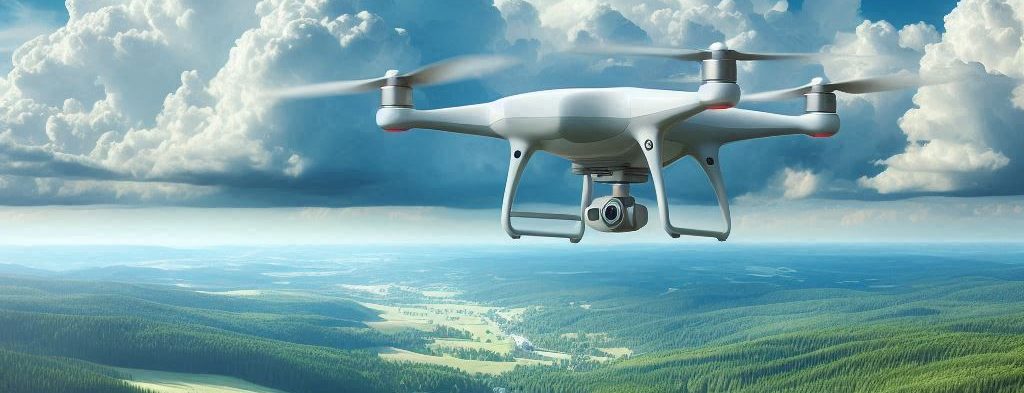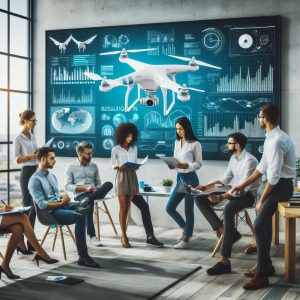Category: Regulations
Drone Regulations: Navigating the Skies
Introduction
Drones, or Unmanned Aircraft Systems (UAS), have revolutionized various sectors, from recreational activities to industrial applications and government operations. However, their rapid proliferation has necessitated the development of comprehensive regulations to ensure safety, privacy, and ethical use. This article delves into the regulations governing drone usage, focusing on consumer, industrial, and government applications, and explores ethical considerations and future trends.
Consumer Use
Regulations
For recreational flyers, the Federal Aviation Administration (FAA) has established specific guidelines under the . Key regulations include:
- Flying below 400 feet: Drones must be operated at or below 400 feet in uncontrolled airspace.
- Visual Line of Sight (VLOS): Operators must keep their drones within their visual line of sight.
- Avoiding other aircraft: Drones must yield the right of way to all manned aircraft.
- No flying over people: Drones should not be flown over people or moving vehicles.
- Registration: Drones weighing more than 0.55 pounds must be registered with the FAA.
Impact on Operators
These regulations ensure that recreational drone operators fly safely and responsibly, minimizing risks to people and property. Compliance with these rules is crucial to avoid penalties and ensure the continued enjoyment of drone flying.
Industrial Use
Regulations
Commercial drone operations are governed by the FAA’s regulations. Key provisions include:
- Remote Pilot Certificate: Operators must obtain a Remote Pilot Certificate by passing an aeronautical knowledge test.
- Operational Limits: Drones must be flown below 400 feet, within VLOS, and during daylight hours.
- Waivers: Operators can apply for waivers to fly beyond these limits, such as flying at night or over people.
Impact on Operators
Part 107 regulations provide a framework for safe and efficient commercial drone operations. By adhering to these rules, businesses can leverage drone technology for various applications, such as aerial photography, surveying, and inspections, while ensuring public safety.
Government Use
Regulations
Government agencies, including law enforcement and emergency services, operate under the guidelines. Key regulations include:
- Certificate of Authorization (COA): Agencies must obtain a COA to operate drones in specific airspace.
- Operational Flexibility: Government operators have more flexibility in their operations, such as flying beyond VLOS or at night, provided they meet safety requirements.
Impact on Operators
These regulations enable government agencies to utilize drones for critical missions, such as search and rescue, disaster response, and surveillance, while maintaining public safety and privacy.
Ethical Considerations
Privacy
Drones equipped with high-resolution cameras can capture detailed images and videos, raising significant privacy concerns. Operators must respect individuals’ privacy rights and avoid intrusive surveillance.
Data Security
The data collected by drones, including images and videos, must be securely stored and managed to prevent unauthorized access and misuse.
Safety
Ensuring the safe operation of drones is paramount. Operators must adhere to regulations and best practices to minimize the risk of accidents and collisions.
Future Trends in Drone Regulation
Beyond Visual Line of Sight (BVLOS)
The FAA is expected to expand regulations to support BVLOS operations, enabling long-distance commercial applications such as delivery and infrastructure inspections.
Integration with UTM Systems
Unmanned Aircraft System Traffic Management (UTM) systems are being developed to manage drone traffic in low-altitude airspace, particularly in urban environments.
Advanced Air Mobility (AAM)
Regulations will evolve to accommodate AAM operations, including passenger-carrying drones (eVTOLs), ensuring their safe integration into the national airspace.
Autonomous Operations
As autonomous drone technology advances, new regulations will address issues related to automated flight planning, decision-making, and safety protocols.
Conclusion
Drone regulations are essential to ensure the safe, ethical, and efficient use of this transformative technology. By understanding and adhering to these regulations, operators can harness the full potential of drones while safeguarding public safety and privacy. As drone technology continues to evolve, so too will the regulatory landscape, paving the way for innovative applications and new opportunities.
: : :
1. www.flyeye.io
2. www.peacefulskyalliance.org
3. dronelife.com


